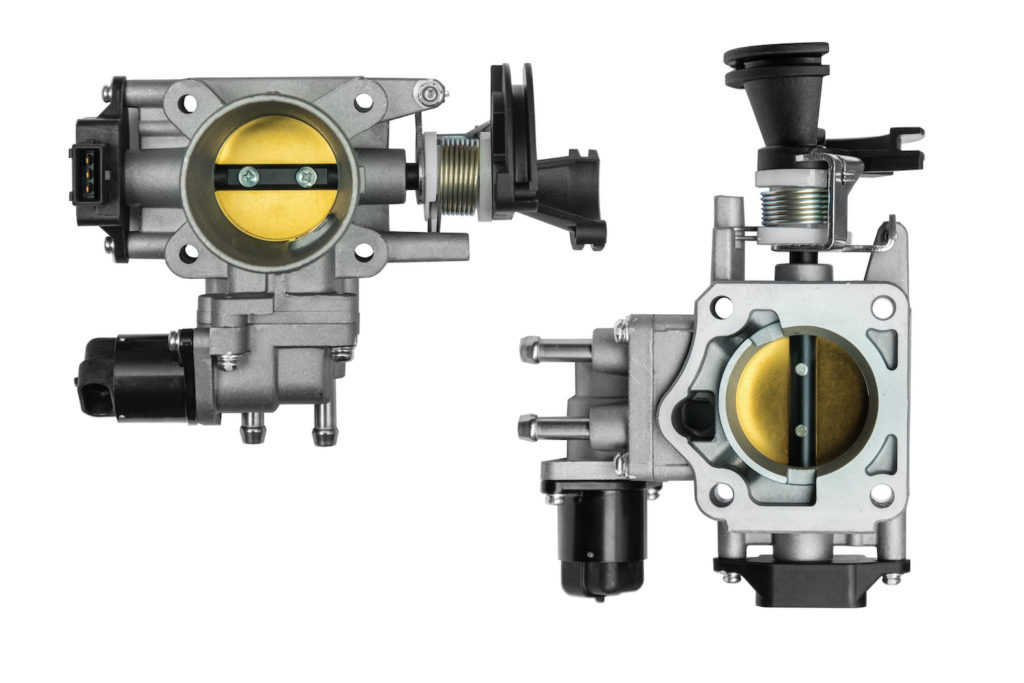Repair instructions
Bad Throttle Body Symptoms
Overview:
The throttle body plays a crucial role in regulating the air that enters your engine, affecting its performance. There are two main types: mechanical and electronic. When the throttle body starts malfunctioning, you might notice a range of issues such as poor acceleration, reduced engine power, rough idling, stalling, and even misfires in rare cases. It’s important to address these problems as soon as possible to avoid further damage to your vehicle. A dirty throttle body can also contribute to poor fuel economy, so don’t ignore these symptoms.
What is a Throttle Body?
The throttle body consists of a plate mounted on a shaft within a housing, regulating the airflow into the engine. When you press the accelerator, the throttle plate opens, allowing more air to reach the engine. This controls engine speed. Older vehicles use mechanical throttle bodies with a cable connection to the accelerator, while modern cars often use electronic throttle bodies (ETC), which rely on sensors and electric motors for precise control.

A car with a dirty or damaged throttle body is likely to have poor fuel economy.
In mechanical systems, an Idle Air Control (IAC) valve helps regulate airflow when the throttle plate is closed. In newer electronic systems, the engine control module (ECM) or powertrain control module (PCM) manages air intake and throttle response, often without the need for an IAC valve.
Common Symptoms of a Bad Throttle Body:
If your throttle body starts to fail, the engine will likely show a few distinct symptoms. Here’s what to look out for:
- Stalling: A sticky throttle plate, caused by carbon buildup or dirt, can cause your engine to stall unexpectedly, especially during idle. This is often due to restricted airflow or the plate getting stuck in the closed position.
- Rough Idle: If the throttle body is dirty or malfunctioning, it can disrupt the balance of air and fuel, causing an unstable idle. Your car may idle too high, too low, or even struggle to idle at all.
- Loss of Engine Power: A malfunctioning throttle body can lead to poor acceleration or sluggish response when you press the pedal. You may notice your car struggling to accelerate, even when you apply more pressure to the pedal.
- Illuminated Check Engine Light: Most modern vehicles have sensors in place to monitor the throttle body’s performance. If a fault is detected, the check engine light will usually turn on. You may also notice specific throttle body-related error codes.
- Reduced Power Warning: In vehicles equipped with an ETC system, if the throttle body fails, you might see a “Reduced Power” warning on the dashboard, which limits engine power to prevent further damage.
- Rough Running or Misfires: In rare cases, a bad throttle body can affect the air/fuel mixture, leading to misfires or a rough engine operation.
What Happens with a Dirty Throttle Body?
A dirty throttle body can cause similar symptoms to a faulty one. Here’s how it affects your vehicle:
- Slow Acceleration: Dirt and carbon buildup can restrict airflow, resulting in sluggish acceleration. Your car may feel slow to respond when you press the pedal.
- Poor Fuel Economy: A clogged throttle body can cause the engine to consume more fuel than usual, as it can’t efficiently regulate the air intake needed for optimal combustion.
Is It Safe to Drive with a Bad Throttle Body?
In short, no. Driving with a malfunctioning throttle body is unsafe. It can lead to sudden stalling, reduced power, or failure to accelerate, all of which pose a significant safety risk. It’s best to address the issue immediately by cleaning or replacing the throttle body.
Throttle Body Maintenance and Cleaning:
Cleaning the throttle body can often restore proper function, especially if the issue is caused by dirt or carbon buildup. However, be cautious when performing this task:
- Never touch the throttle plate with your fingers. This can damage the throttle body mechanism, particularly in vehicles with electronic throttle control systems.
- Always use a brush to clean the throttle body. This will avoid causing any debris to fall into the intake manifold or damaging sensitive components.
When to Replace the Throttle Body:
Throttle bodies generally need to be replaced every 100,000 to 150,000 miles. However, if you experience any symptoms of a faulty throttle body before then, it’s a good idea to get it checked and potentially replaced sooner.
If you’re noticing signs of a bad or dirty throttle body, don’t wait—take your vehicle to a trusted mechanic to get it diagnosed and repaired as needed. Ignoring the problem can lead to more serious engine issues, affecting your vehicle’s performance and safety.
